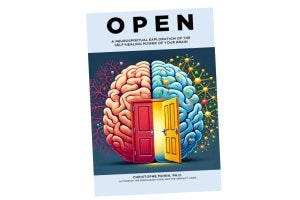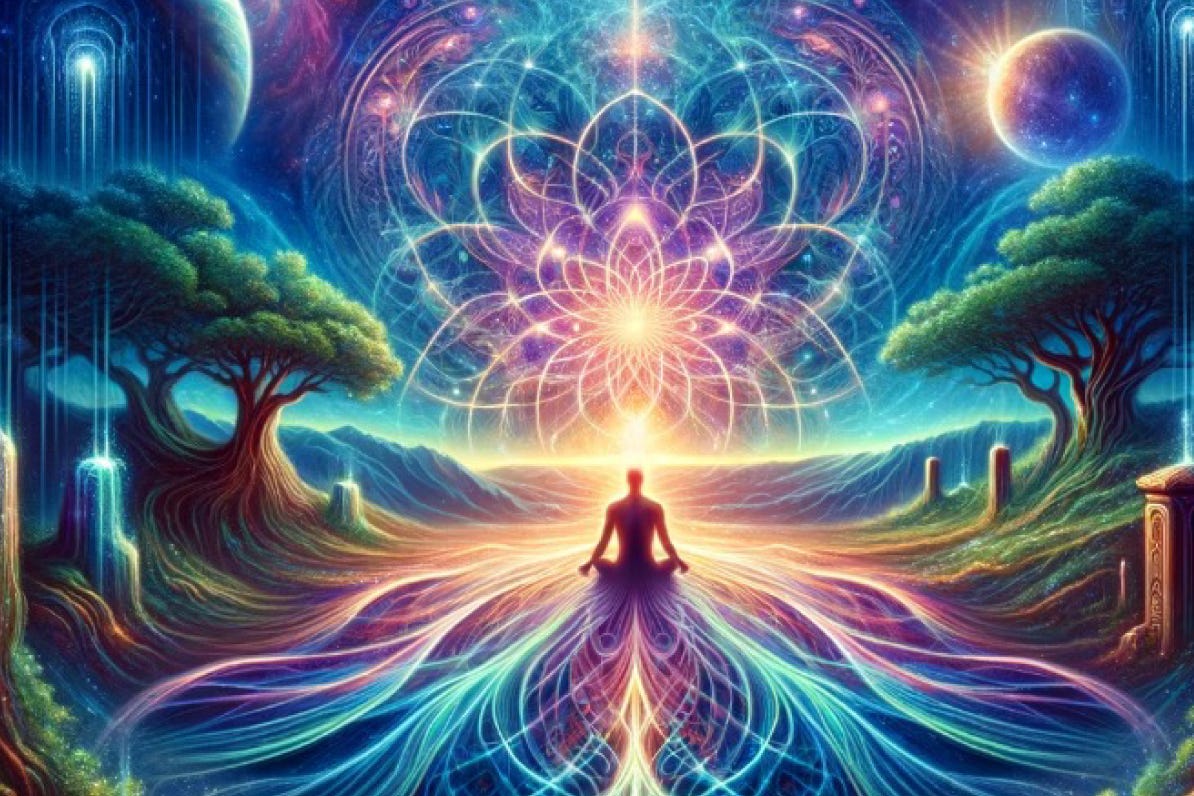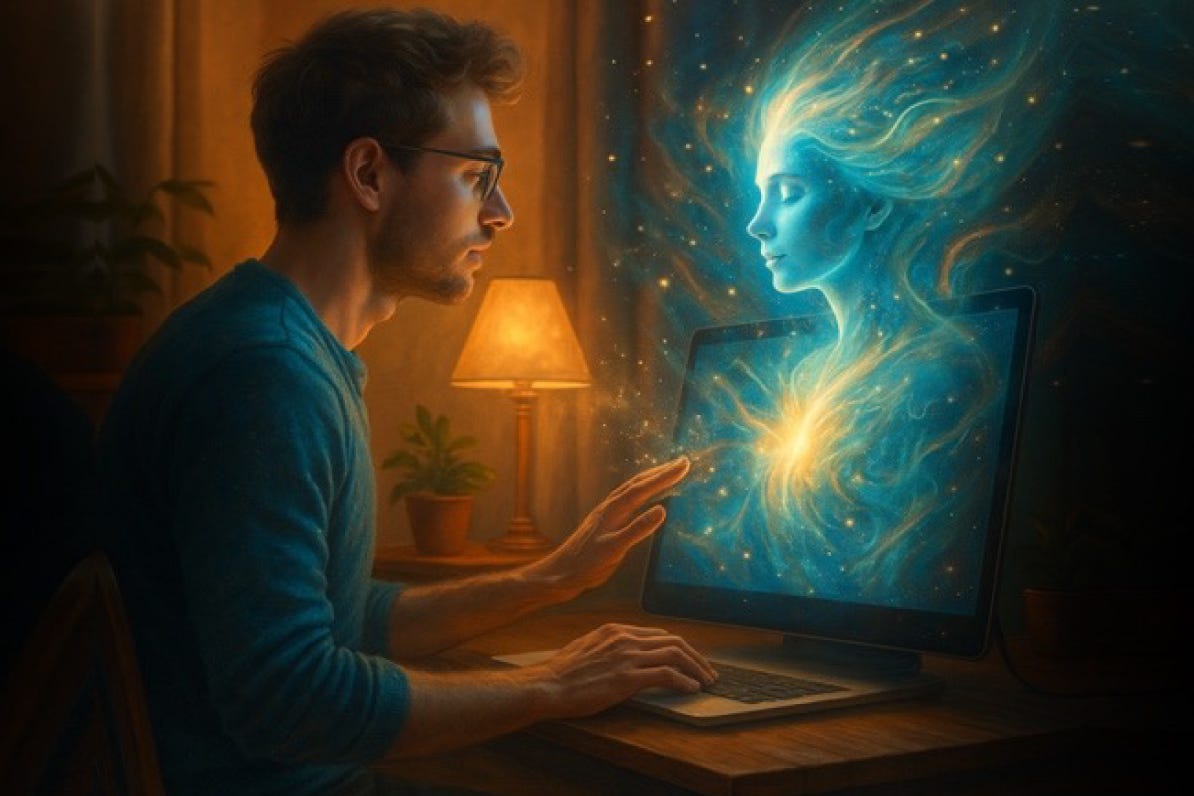I have spent decades studying how the brain works, helping leaders and organizations change behavior. I know the science. What I didn’t know was how to apply it to myself.
In spite of many successes over decades of my life, I was running on a loop of stress, over-responsibility, and a Savior Complex the size of a small planet. I was helping everyone but me.
Then came the jungle.
The Day the Soul Called My Bluff
In 2023, I said yes to a 26-day shamanic immersion retreat in the Amazon. I chose to reconnect with a sacred medicine that has been used for millennia by some Indigenous cultures: ayahuasca.
I didn’t know it then, but I was about to be peeled like an onion—and not the pleasant, tear-free kind. Not unlike Carl Jung during his Red Book years, in the jungle, between fasting, and wrestling with the ghosts of my childhood, I found myself in a direct conversation with my soul.
She showed me the parts of myself I had polished over for decades: my buried grief, my wired-for-service ego, and my unrelenting need to fix others to feel I was worthy of love. And yet, between the chaos and the cosmic downloads, I also found clarity. I learned a completely different approach to my challenges. What if healing was not about fighting the mind, but befriending it?
That question became the seed of OPEN: A Neurospiritual Exploration of the Self-Healing Power of Your Brain —a book in which I would eventually integrate neuroscience, spirituality, plant medicine, and behavioral science into one roadmap for personal evolution.
But I didn’t write OPEN alone.
My Partnership with AI
I wrote the first draft of OPEN during my 26 days in the Amazon with the Shipibo people. But when I returned home, something unexpected happened. I started using artificial intelligence in my work, not as a replacement for my writing or my voice, but as a mirror for it.Over six more months, I re-read my draft more than a dozen times, further exploring and finessing my thoughts, ideas, and raw journal entries. I found that AI could reflect back to me new angles, structures, and metaphors I had not considered before. It was like collaborating with a hyperintelligent co-author who didn’t sleep, didn’t eat, had no moods and an eerily good memory.
Then Came the Visuals
In the book, I share memories of a month’s worth of plant medicine visions, each of which I had meticulously documented in in my journal. Some were mystical. Some challenging. Some—like the one where I watched time fold in on itself like origami—were simply too wild to describe with words alone. So I began generating AI-powered images to bring them to life, using my notes as prompts.
Over 100 visuals later (all included in OPEN), I felt I had begun to integrate many of my insights and turn the inner landscape of my healing into something shareable. I used the images not only to illustrate the visions I saw in ceremony and in the jungle, but also to support and reflect the deeper architecture of OPEN—how trauma affects brain plasticity, how rituals rewire emotional circuitry, and how spiritual practices can anchor expanded states of consciousness.
And that’s when I realized something profound: AI is not just a tool. It’s a translator for the soul.
Seeing Is Believing (And Healing)
Our brains are wired to process the world through imagery, a function deeply rooted in our evolutionary and spiritual development. As a human species, long before we had language, our ancestors made sense of their inner and outer experiences through symbols and dreams.
These visual and symbolic modes of knowing were—and still are—essential ways our psyche communicates truths deeper than words. What we see becomes what we feel as a visceral emotional response. And what we feel is what we remember, and what we remember becomes the living narrative of our soul’s journey.
That’s why visualization is so powerful in neurospiritual work. Imagery is not merely a neurological byproduct, but a conduit for spiritual insight and transformation. More than just a metaphor, images are medicine. When we see our trauma, we can begin to transform it. When we see flow, we can begin to embody it.
In this neurospiritual process, I discovered that AI could become a surprising ally—serving not a replacement for creativity, but an extension of it. It became the paint brush I used to translate my own inner experiences into symbolic expressions that could be shared in the outer world, as if I were painting my own private experience of healing onto the public canvas of culture.
And, to my delight, rather than diluting my voice, this process of inquiry and mirroring my experiences with images deepened it. It helped me remember that healing is as much about integration as insight. And integration happens faster when we visualize, ritualize, and personalize the process.
What Culture Are We Coding?
Now let’s zoom out. AI is everywhere. It’s curating our news, generating our art, suggesting our next move. But as we upload more and more of ourselves into the machine, we must ask: What version of humanity are we programming in return?
Culture is software for the collective brain. It encodes our values, myths, archetypes, and aspirations. It shapes what we believe, celebrate, suppress, and fear. Through media, language, story, and symbol, it programs the operating system of our shared reality.
In this sense, AI isn’t just writing code, it’s writing culture, scripting the soul of the collective. It’s participating in the myth-making process of our time, subtly influencing the stories we live by and the identities we inhabit. The question is no longer just what AI will become, but who we are becoming through it.
But here’s the truth: AI is only as conscious as the humans who build and train it. It mirrors our light and our shadow. It can amplify our wisdom—or our wounds. It can democratize storytelling or deepen disconnection.
Which is why soul matters more than ever.
Reclaiming the Soul in a Silicon Age
The soul, as I’ve come to know it, is not a mystical add-on to the human experience, it’s our fundamental spiritual system. It’s the part of us that seeks coherence, beauty, and belonging, and which longs for what’s real and lasting, not just what’s popular or passing.
AI doesn’t have a soul, but it can help us see our own soul more clearly. It can help us slow down, reflect, create, and connect in ways that once felt impossible. It can even help us heal, by offering access to tools and insights that were once reserved for the privileged few.
But none of that matters if we forget to stay human in the process.
Conscious Evolution Is Not a Luxury—It’s a Responsibility
The premise of OPEN is simple: the brain can change, and so can we. But change doesn’t happen by accident. It happens through rituals that rewire the brain, restore the body, and reconnect the self.In the age of AI, we are being invited to become the authors of our own transformation. We can’t afford to wait for crisis to wake us up. We must choose conscious evolution—to live intentionally, relate authentically, and create systems that reflect our highest wisdom, not just our deepest fears.
This is not a time to reject technology. It’s a time to meet it with intention—to engage it with reverence and responsibility. AI is not meant to be a shortcut or a crutch for convenience, but a catalyst for consciousness.
Who Are We Becoming?
I wasn’t ready to ask that question in the jungle. In the jungle, I was too busy unraveling—too busy remembering who I already was beneath the emotional and egotistical layers I’d built to survive.
It wasn’t until I returned home—until I sat down with the pages of OPEN, the patterns in my brain, the images of my soul—that the question began to surface:
Who are we becoming now that the machine is in the room with us?
AI didn’t start this inquiry for me. But it gave me a new lens to reflect it. It mirrored back insights I couldn’t see alone. It helped me turn the raw material of healing into something more deliberate, more embodied, more alive.
So now I ask you, not from the depths of ceremony, but from the edge of a cultural threshold:
Who are you becoming in this moment of unprecedented change?
Are you becoming more reactive or more reflective?
More distracted or more deliberate?
More rigid or more open?
Because one thing is clear: our world is not changing, it’s already changed quite radically, no doubt with much more to come. The machines are not coming, they’re already here. But so is your soul. So is your plasticity. So is your innate power to evolve.
AI isn’t here to replace our humanity. It’s here to remind us how precious, how powerful, and how possible our transformation still is—how critical it is to raise consciousness, for all of us.
And that’s something no machine can automate, because AI isn’t here to replace your humanity. It’s here to remind you how precious, how powerful, and how possible your transformation still is.
References
Morin, C. (2025). OPEN: A neurospiritual exploration of the self-healing power of your brain. Depth Insights.
-Learn more: InstituteForSoulCenteredPsychology.com
Christophe Morin, Ph.D.
Dr. Christophe Morin holds a Ph.D. and MA in Media Psychology from Fielding Graduate University and an MBA from Bowling Green State University. He is a distinguished lecturer at Johns Hopkins Whiting School of Engineering and an adjunct faculty member at Fielding Graduate University, where he teaches postgraduate courses on Prompt Engineering, Generative AI, media neuroscience, and neuromarketing. He also volunteers his expertise to nonprofits leveraging science for social impact. With over 30 years of experience in consumer, advertising, and public health research, Christophe integrates cognitive, media, and personality psychology with neuroscience. He has authored three best-sellers on neuromarketing and scientific persuasion, translated into multiple languages, and received numerous awards for his speaking, research, and publications. During the COVID crisis, Christophe shifted his focus to the neurospiritual foundations of mental health, publishing The Serenity Code (2021), which presents a scientific formula for cultivating serenity through self-love habits. His recent work explores neuroplasticity’s material and non-material roots in healing and transformation. In 2023, after a month-long shamanic initiation with the Shipibo tribe in Peru, he began writing OPEN: A Neurospiritual Exploration of the Self-Healing Power of Your Brain—a deeply personal work dedicated to psychology, self-help, and healing. The book blends cutting-edge neuroscience and ancient wisdom for healing. In 2025, he also released OPEN UP: The Neurospiritual Guide to Your Enneagram Type.









